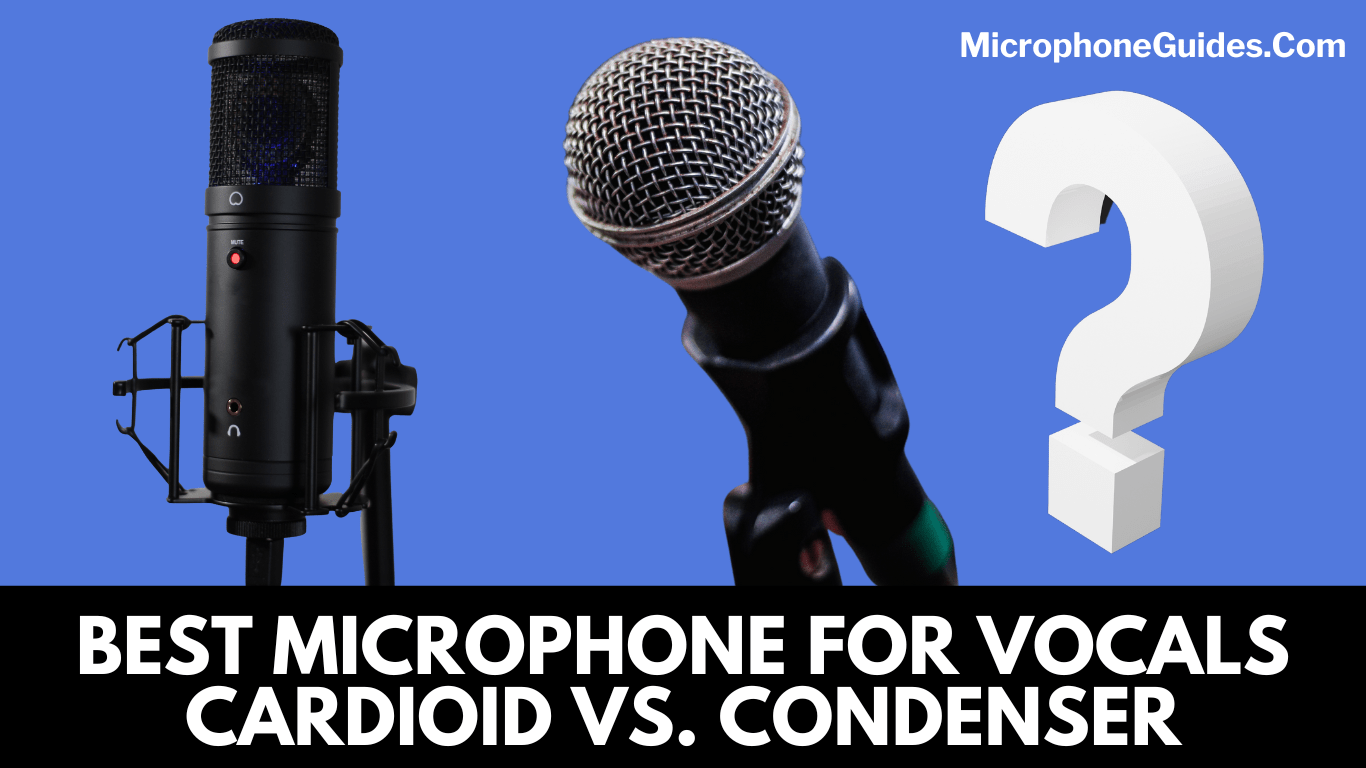Microphones are one of the most mandatory tools nowadays, and any trouble related to them can create a mess for you, especially if you are planning to create something new. And if you are looking for a microphone that can perfectly suitable for the vocals, then you must have complete know-how about the terms related to the microphone and the different types of microphones.
Although there are several types of microphones, the most confusing for all is the difference between a cardioid microphone vs. condenser microphone.
Let’s move ahead without further delays!

What is a Microphone?
A microphone is an input device that transfers the sound waves in the air into electrical energy, which can be recorded after vocal adjustments like transmission and amplification.
This amazing entry into the world of tools was first introduced by Emile Berliner in the year 1877. Hopefully, the beginners that were unknown of the term microphone are now ready to grasp the concept of its types and their differences.
Let’s start with the difference between a cardioid vs. a condenser microphone!
Cardioid vs. Condenser Microphone – The Difference
Microphones are a basic necessity for people who want to create content for vlogging, podcasts, and streaming. And the quality of your content depends on the type as well as the quality of the microphone you are using.
So you can say, a content creator relies totally upon the microphone, and condenser and cardioid are the two most common but perplexing terms that distract the minds of readers.
While reading the difference between the two microphone types, i.e., cardioid vs. condenser, you should know that most people call it an invalid difference. We will read this article ahead to explore the actuality of this statement. But before diving into the depth of this topic, we will let you know that the condenser microphones are also cardioid microphones.
But the point to ponder here is that cardioid refers to the sound pattern or the polar pattern produced by the microphone, while the condenser is a type of microphone like the other types, for example, dynamic microphones.
Undoubtedly, it is hard to explain cardioid and condenser microphones, but the explanation of another main type of microphone, i.e., the dynamic microphone, can help you in getting the concept of condenser microphones as the microphones are categorized based on the transducer principle. So dynamic microphones are the most versatile type of microphones that are used by engineers. They work with the help of a magnetic moving coil diaphragm.
If you want to record the loud sound pressure, then dynamic microphones are the preferable ones. Due to their high sound adjustment, these microphones are used along with guitars, drums, and other acoustic instruments.
1. Condenser Microphones
If you are looking for a sensitive microphone that can give you the most professional experience, then condenser microphones are the most recommended ones. The diaphragm of this microphone is made of a thinner material that has conductive properties.
The condenser microphones grab the sound waves more efficiently and transfer them into the adjusted sound with more detail that automatically enhances the sound quality for the podcasts or streams.
And this is an undeniable fact that people focus more on the sound quality as compared to the content you have created.
This microphone works when the distance between the two capacitor plates changes when the sound hits the diaphragm of the microphone. This helps in generating the electrical signals, which create a crisper sound that hits the ears of the listeners and mesmerizes them completely with the content.
2. Cardioid Microphone
Microphones have different polar patterns. The polar pattern refers to the measure of sensitivity to how much of the signal will be gathered by the microphone from different directions. This also represents the microphone’s inherent directionality.
Some polar patterns include omnidirectional, bidirectional and ultra-directional, etc. The most common polar pattern among all is the cardioid polar pattern. So this is clear to you now that cardioid is not a typical type of polar pattern. The name of this pattern has roots in the word cardiac because of the heart shape pattern that is generated after receiving the sound waves.
Cardioid receives the sound directly in front of a microphone and rejects the sound at an angle of 180 degrees behind the capsule of the microphone.
A microphone with a cardioid polar pattern contains a two-piece construction and is more expensive than the other microphones. And another important point to using a mic with a cardioid pattern is to use the cardioid near the sound source to avoid picking up unwanted sound.
So this supports the fact that a cardioid vs. condenser microphone makes no comparison because this is not right to say that a microphone can only be a cardioid or condenser at one time.
Why are Cardioid Condenser Microphones Preferable?
The cardioid condenser microphones can be used in different sound recordings, for example, drums, amplifiers, and live studio recordings.
The mixing of the sound after the production of the audio is mandatory, especially if you are working with the drums, and this mixing could be easier with a cardioid.
Furthermore, cardioid picks up the sound through an amp which is widely used by engineers. Moreover, live concerts are more energetic with the use of microphones that contain cardioid polar patterns.
Bottom Line
Are you interested to make the concerts, podcasts, streams, YouTube vlogs, comedy clubs, and debates more entertaining and the best to hear? Then microphones are the ultimate solution to this. Due to the different available types of microphones in the market, the choice of the right microphone gives the surety of success.
Hopefully, now you can locate the difference between cardioid and condenser microphones, and this is not a mystery for you now! Stay connected for more information like this!

It’s me Brian Baldree professional sound engineer. I love to write about microphones, headphones, and musical instruments and review it’s quality.









